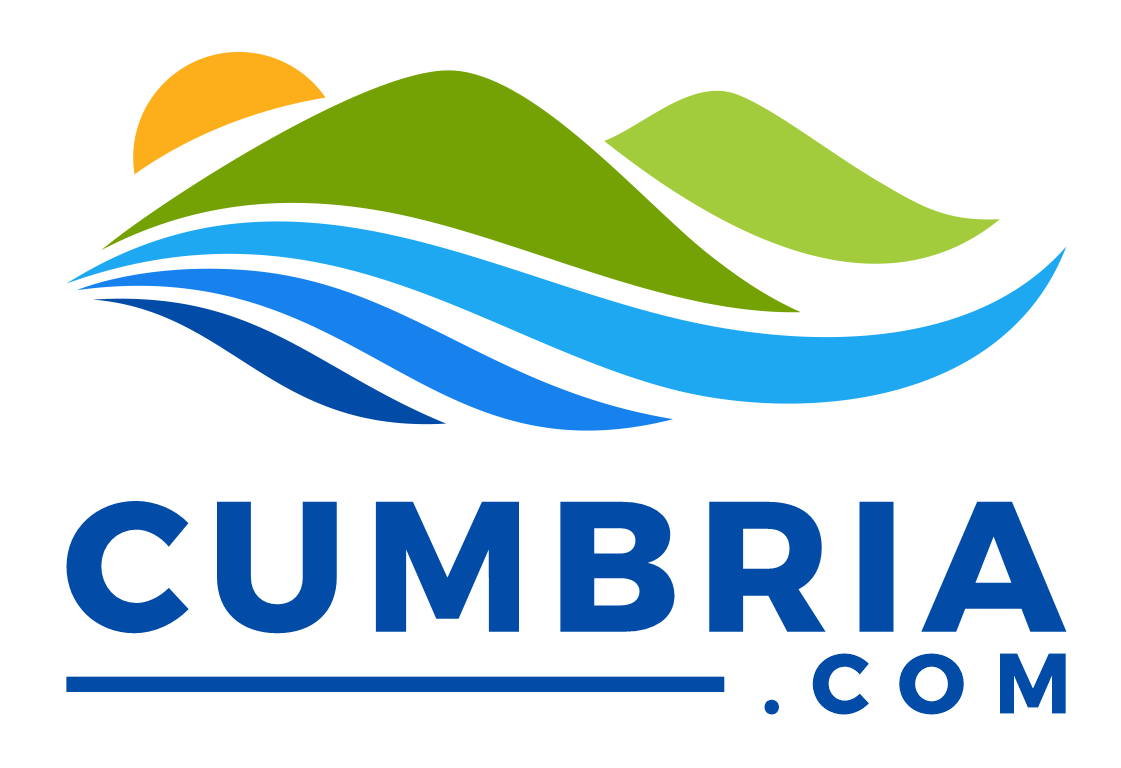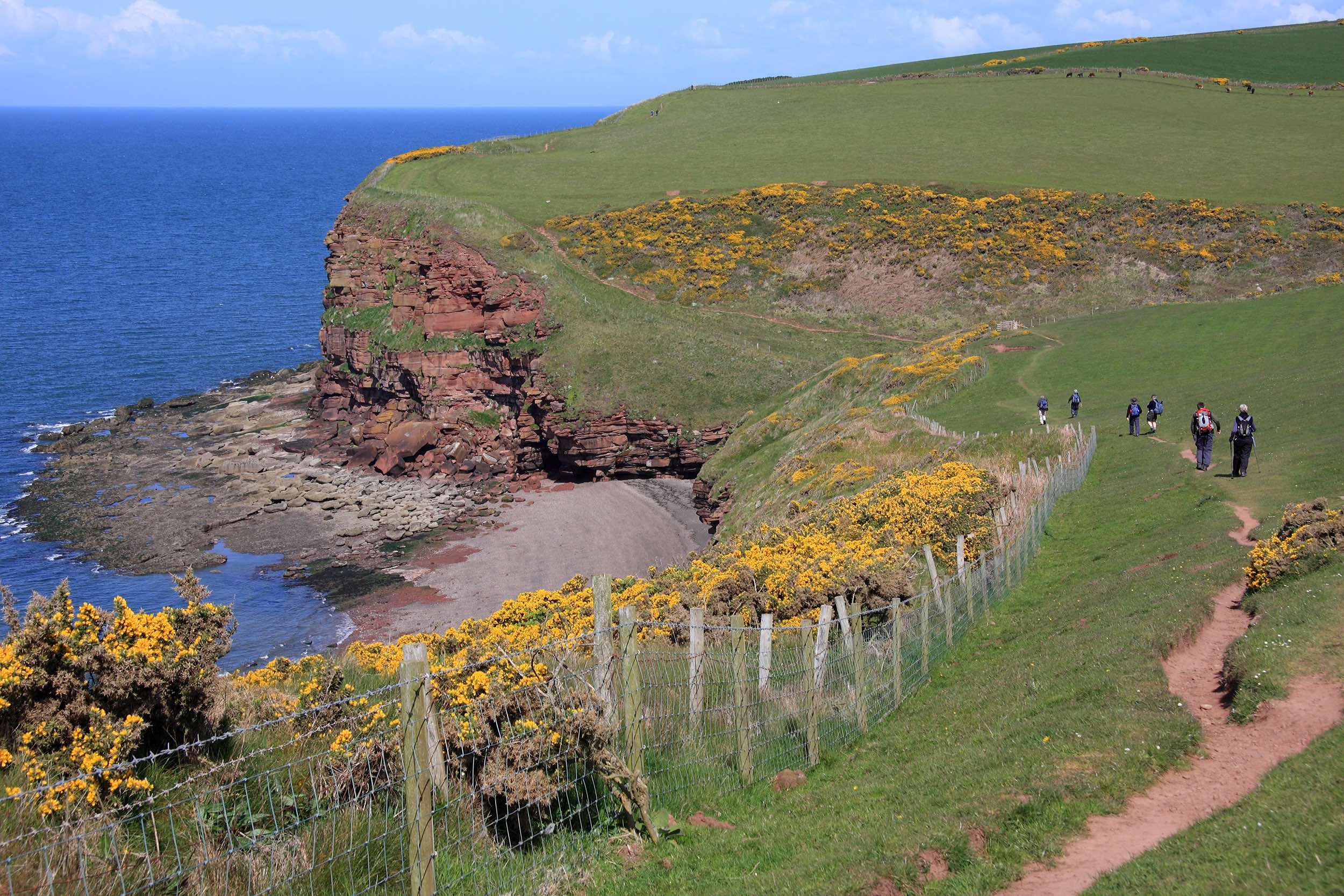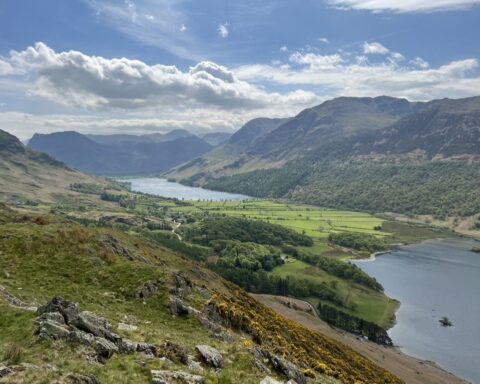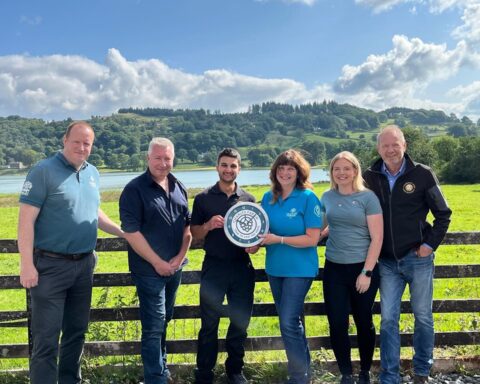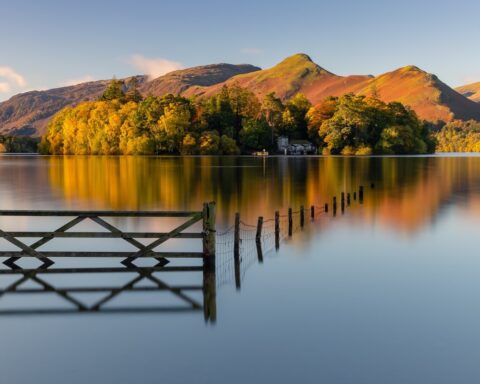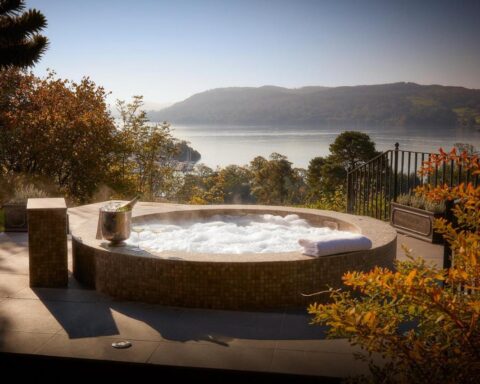North of Ravenglass, Cumbria’s coast is more developed. Before you get to the towns of Whitehaven, Workington and Maryport though, there’s the seabird city of St Bees Head. In the spring and summer, this attractive red sandstone headland – the most westerly point in the county – is home to thousands of breeding kittiwakes, herring gulls, cormorants, razorbills and black guillemots. The nearby village of St Bees marks the starting point for Wainwright’s Coast to Coast, the popular long-distance walking route across northern England.
Further up the coast is the harbour town of Whitehaven. Two fascinating museums, the Rum Story and the Beacon, tell the story of the once-thriving port that is said to have inspired Jonathan Swift to write Gulliver’s Travels. Further north still, beyond the port and industrial sites of Workington, is Maryport. A new marina has played a big part in the revival of this attractive Georgian town in recent years. Visitors can also drop in on the Senhouse Roman museum and, for kids big and small, there’s the award-winning Lake District Coast Aquarium.
Maryport is at the southern tip of the Solway Coast Area of Outstanding Natural Beauty, one of three AONBs in the county – all afforded statutory protection for their landscapes, wildlife and geology. Long beaches, backed by dunes and with excellent views across the Solway Firth to Scotland, stretch all the way from here to Grune Point, near Silloth.
Cockermouth, the birthplace of the poet William Wordsworth, is a few miles inland, close to the north-western edge of the Lake District National Park and dominated by the nearby fells. Drop in on the Wordsworths’ family home and garden, owned by the National Trust and open to the public, or simply enjoy meandering through the town’s labyrinth-like alleyways and hidden courtyards. A plethora of independent shops line the main street, and, should you get peckish, there are lots of cafés and restaurants from which to choose. Thirsty? Well, there’s always the Jennings brewery tour.
Much of this area is served by the Cumbria Coast railway, which links Carlisle in the north with Barrow-in-Furness in the south. Other railway lines, long disused, have been converted into cycle paths. Originally built to serve west Cumberland’s once busy coalfield and the massive iron and steel works of the coastal towns, they are now part of Sustrans’ National Cycle Network. The Sea to Sea (Coast to Coast) cycle route, the Hadrian’s Cycleway and the Reivers’ cycle route all start on this coast.
